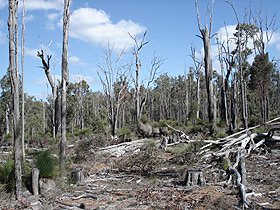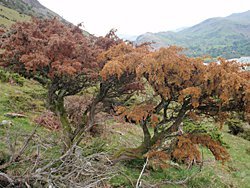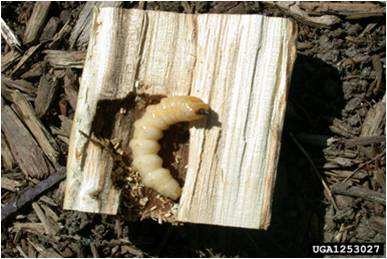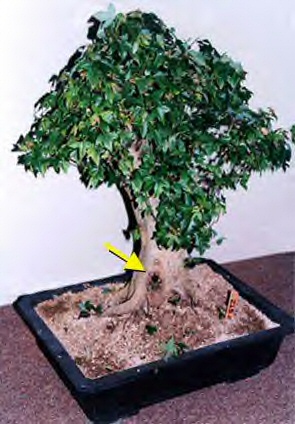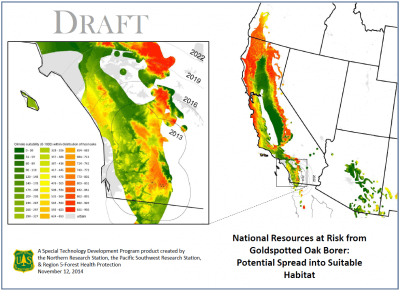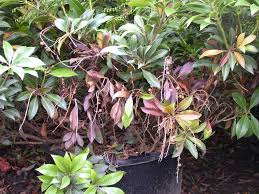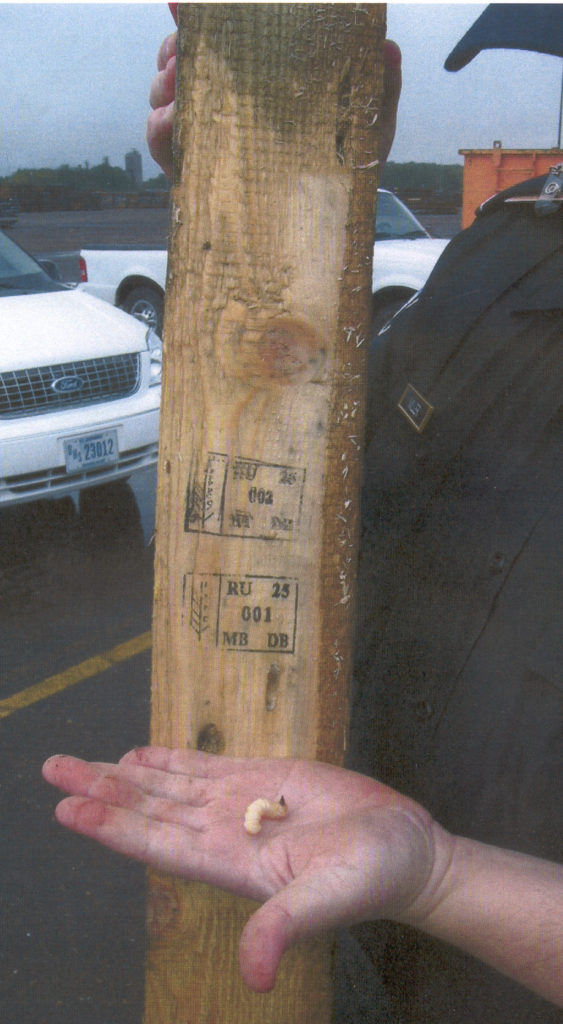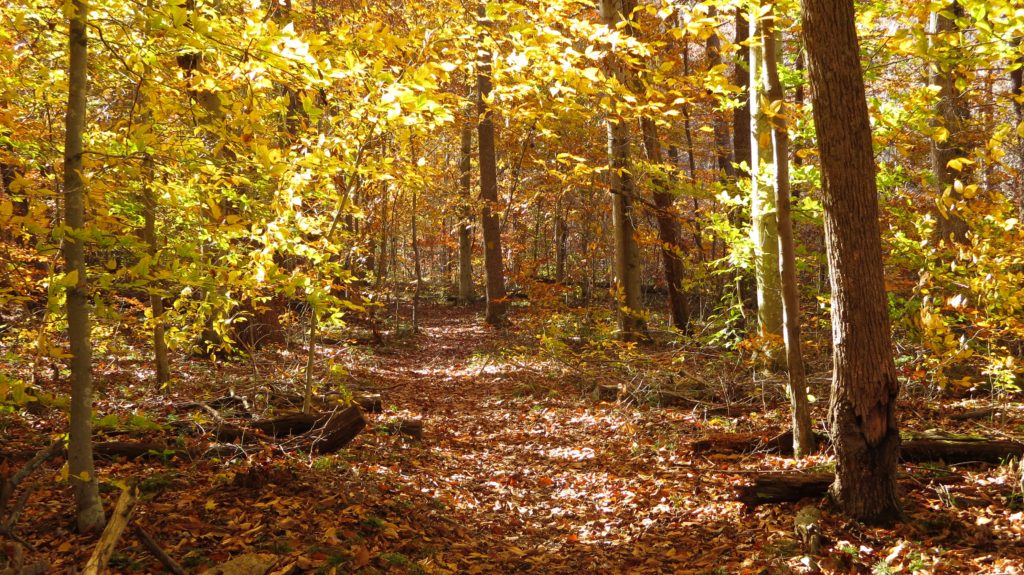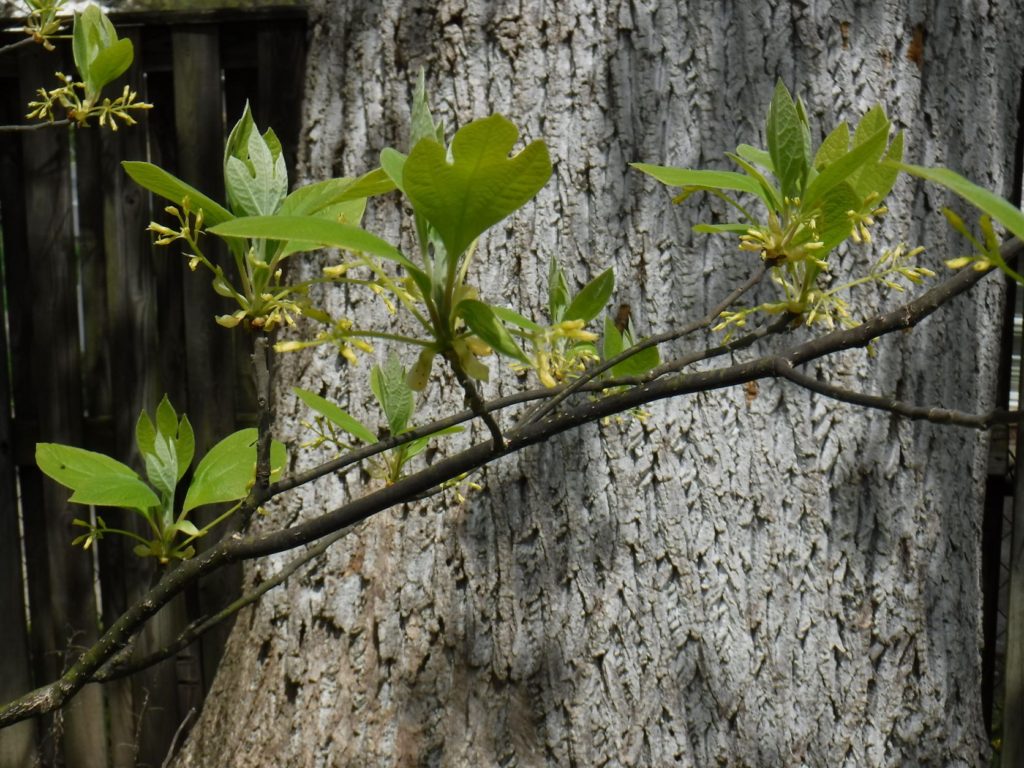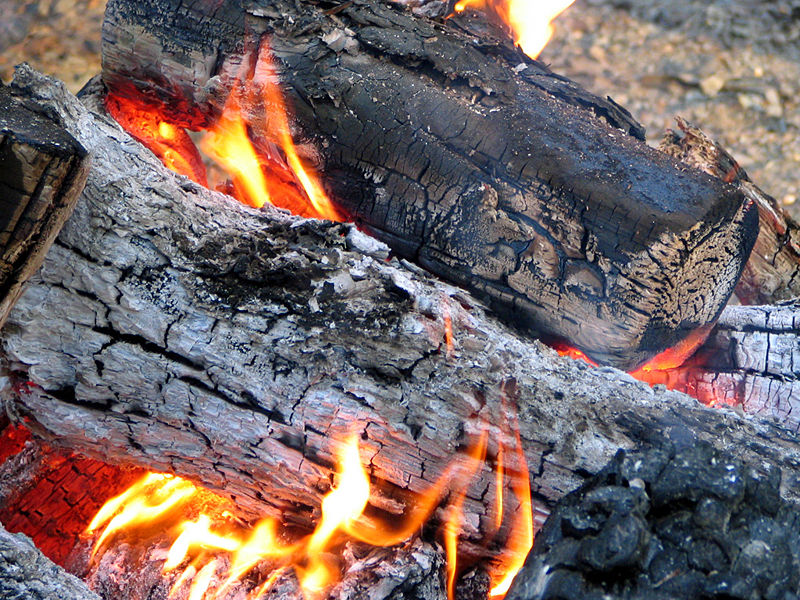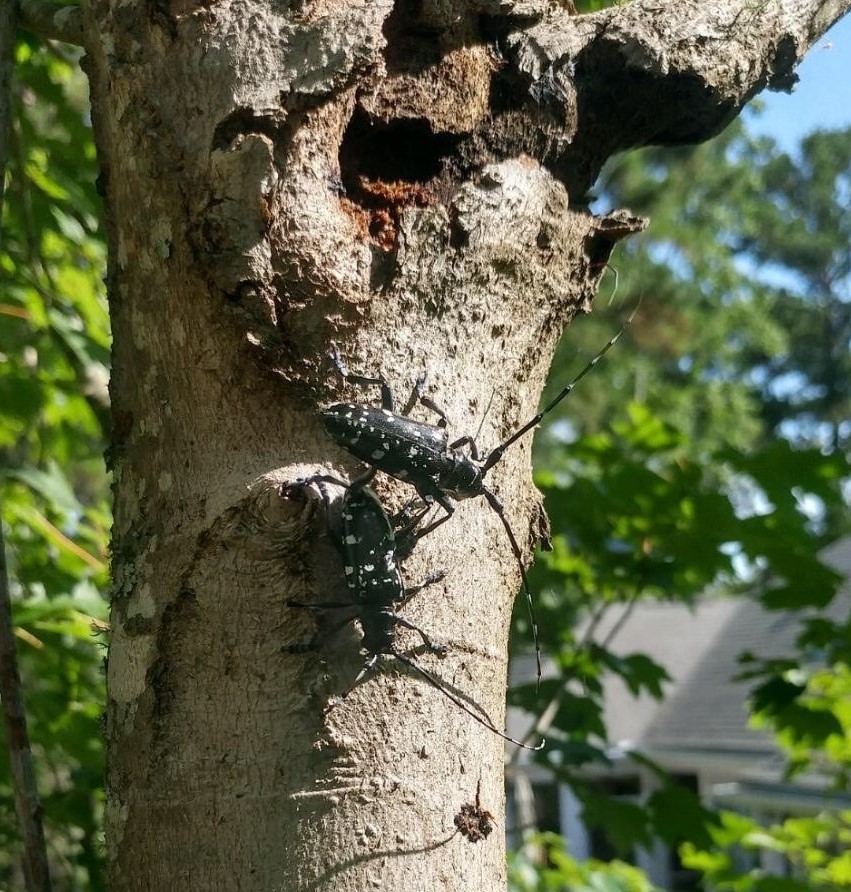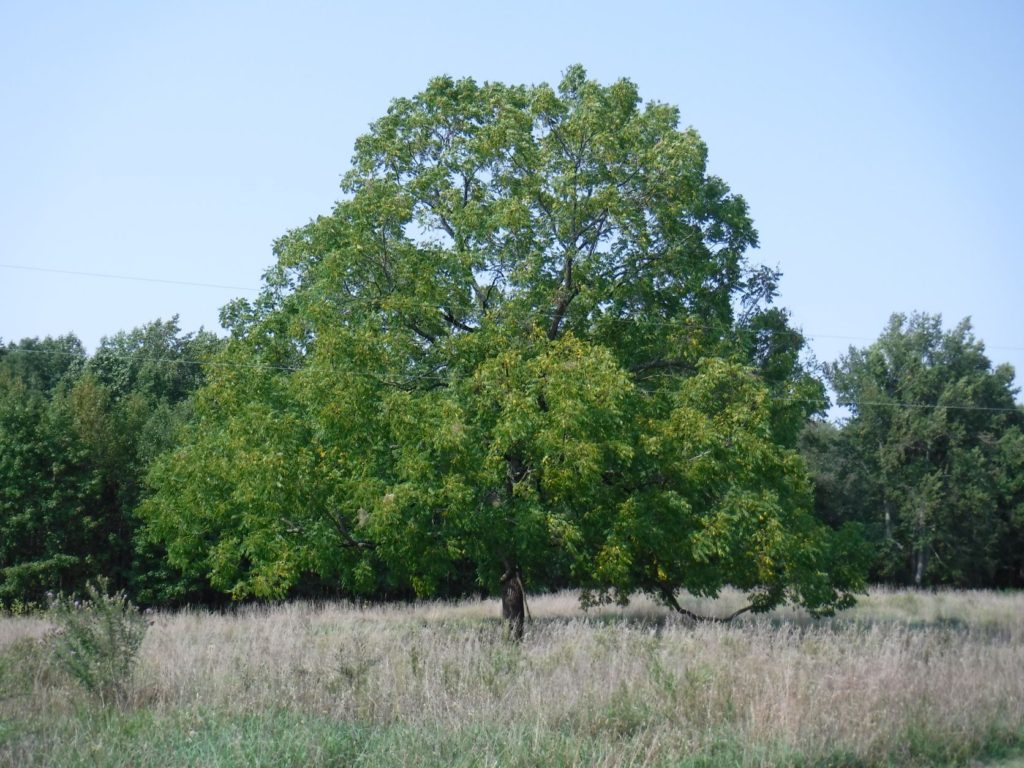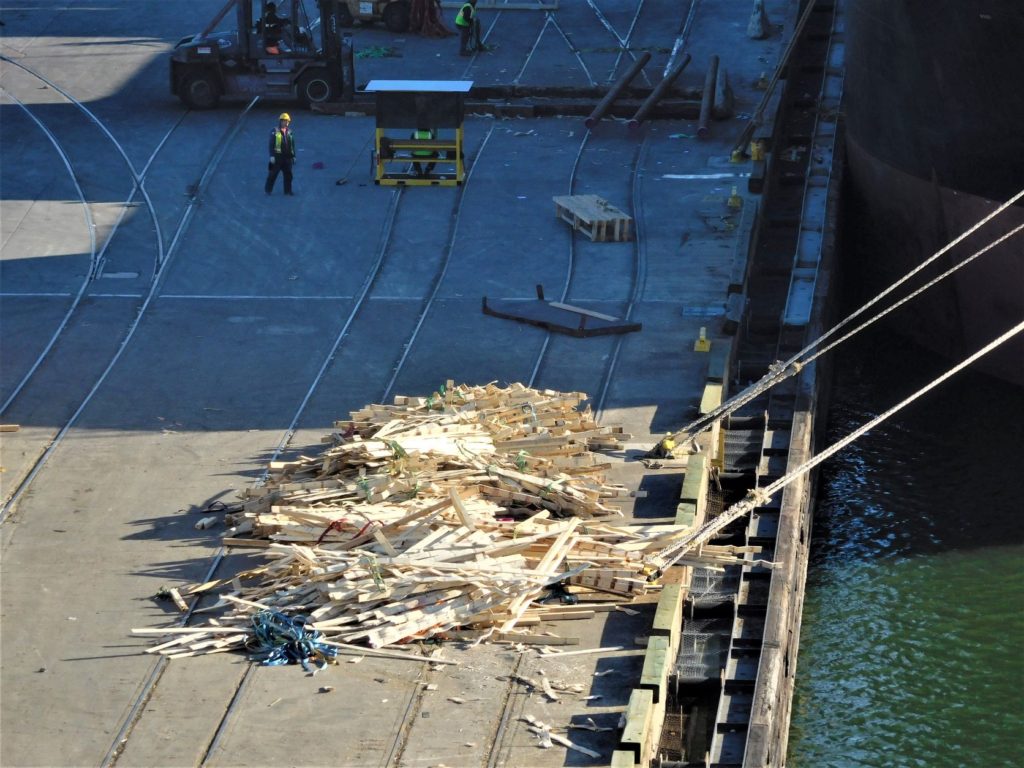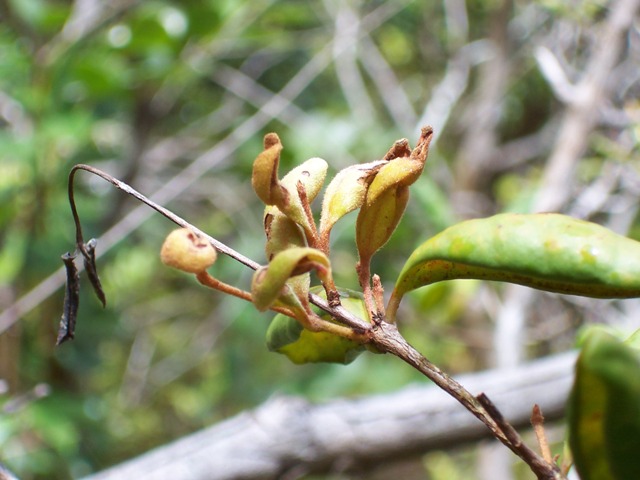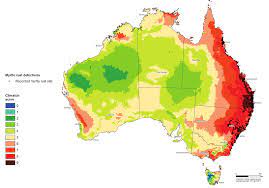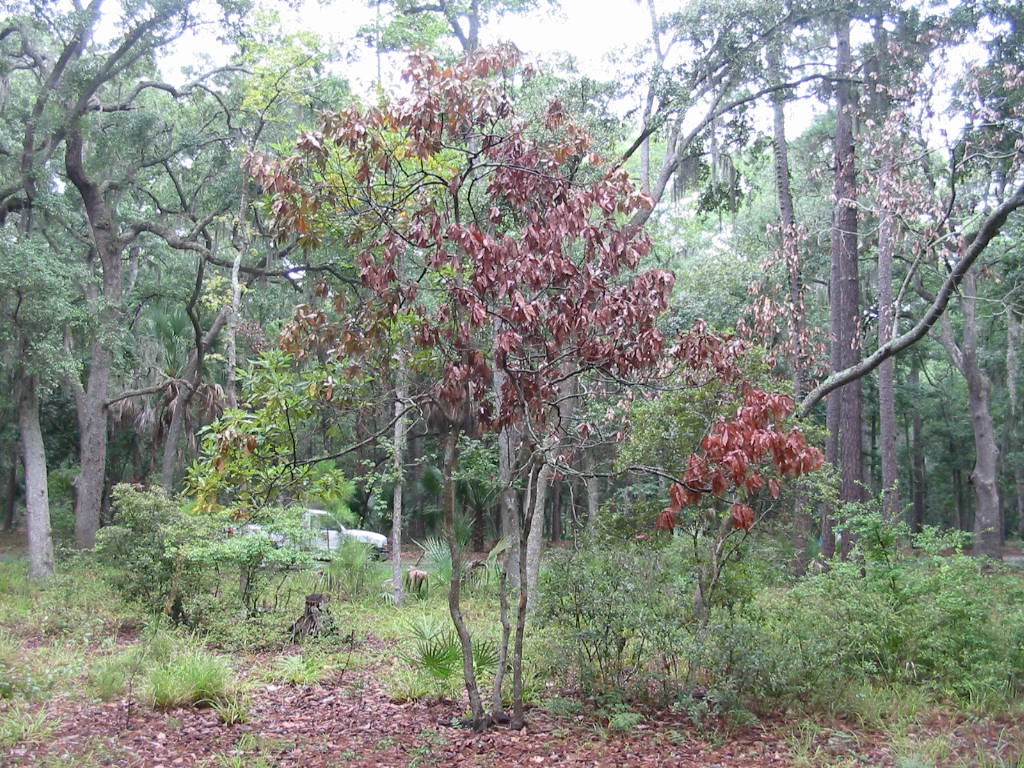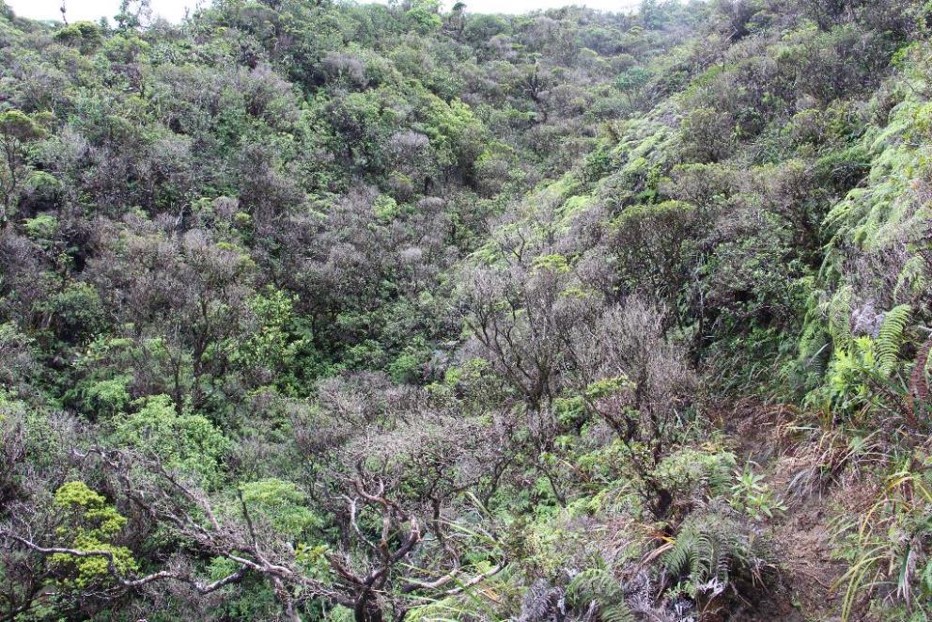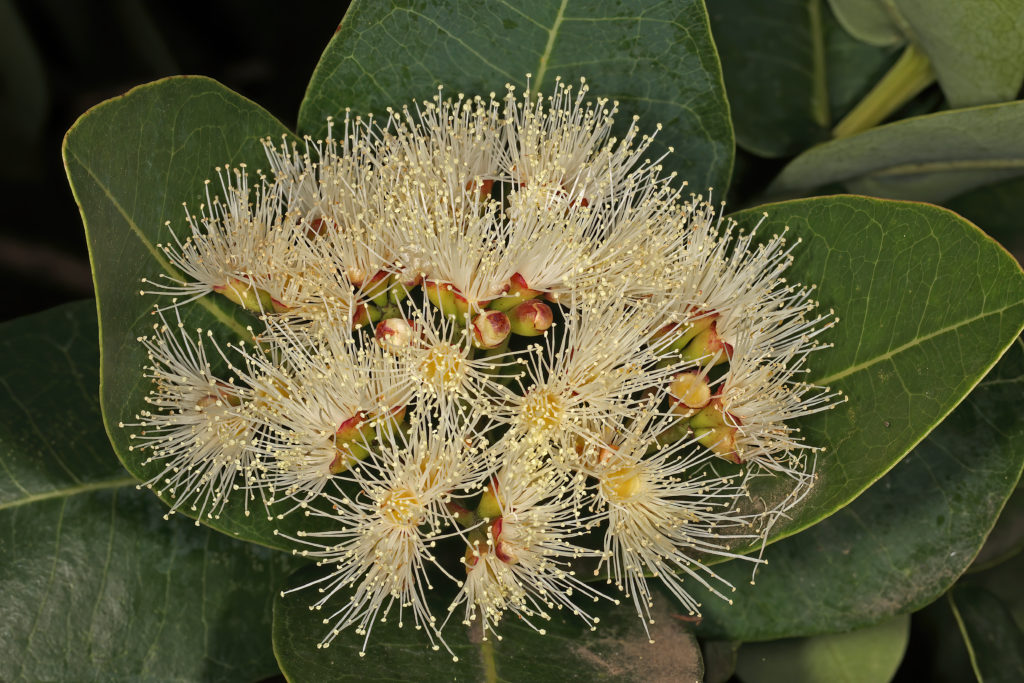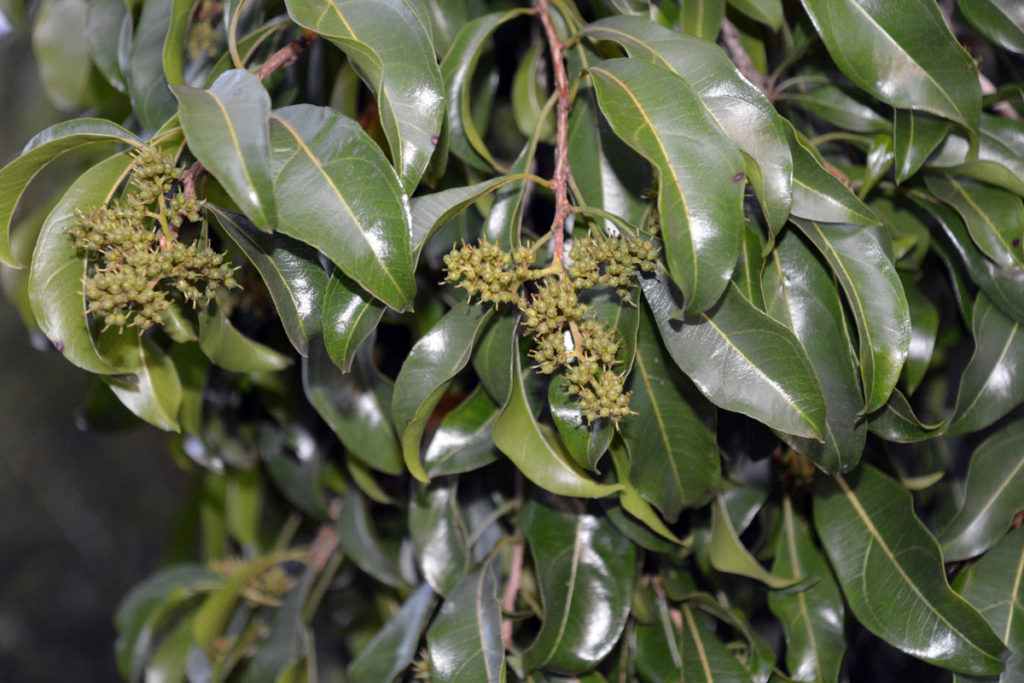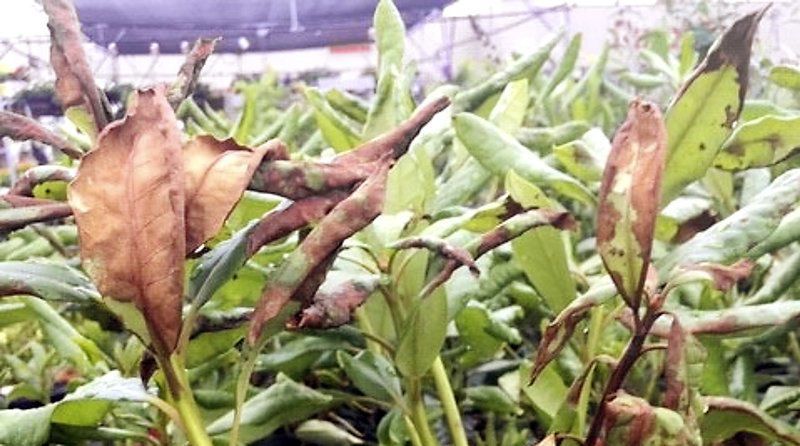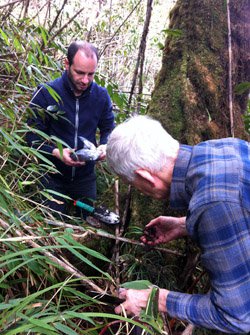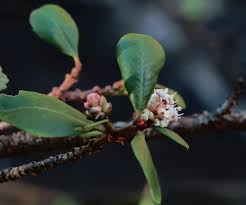Some invasive species practitioners have been trying to develop a standardized framework for describing bioinvasions. Their goal is to overcome disparities in approaches developed by scientists working with various taxonomic groups in hopes of improving understanding of, and communication about, bioinvasions. Prominent among these efforts is the “Unified Framework for Bioinvasion” published by Blackburn et al. in 2011 (full citation at end of blog).
Now several forest pathologists (Paap et al; full citation at end of blog) say that this framework does not adequately integrate forest pathogens. This omission is particularly unfortunate given the prominence of forest pathogens as damaging invaders – e.g., chestnut blight in Europe and North America; white pine blister rust in North America; sudden oak death in North America and Great Britain; myrtle rust and Phytophthora cinnamomi in Australia. (See profiles of all these pathogens here; I note additional examples in North America, such as laurel wilt disease.)
Paap et al think that this omission impedes understanding of both forest pests and invasive species in general. Also, they say that integrating microorganisms into the broader Blackburn framework would help forest pathologists better understand how and why invasions occur, where they occur, and how they can be stopped or mitigated.
Furthermore, they note the importance of integrating the diverging terminologies used by invasive species practitioners and plant pathologists and their separate regulatory bodies – the Convention on the Conservation of Biological Diversity (CBD) and the International Plant Protection Convention (IPPC). I concur, since nations’ programs regulating plant diseases and their vectors operate under the IPPC rubric.
Figure 2 and Table 1 lay out Paap et al.’s proposed modification of Blackburn’s framework, and detail strategies linked to management goals appropriate for the stages of plant disease development.

However, such integration will be impeded by many difficulties (I have re-ordered these points):
1) The first – which underlies all others — is the paucity of data on microbial taxa, which undermines the pest risk analyses and other systems developed for assessing and managing other types of invasive species. That is,
- Many of the vast number of microbial taxa have not yet been described.
- Even species that have been describe often cannot be ascribed to a specific geographic origin. This information gap undercuts efforts to determine whether a disease outbreak is caused by an “introduced” organism.
2) Microbial species are usually detected only when disease impacts become obvious. However, an outbreak might not signal a new or spreading “introduction”. While invasive species must—by definition—cross a geographic boundary (through the assistance of human actions), pathogens can cause disease outbreaks through breaching a wider range of boundaries, including ecological and evolutionary ones. Thus, the disease outbreak doesn’t always fit the definition of “invasive species”.
3) Substantial differences exist in training and goals between fields. Forest pathologists are usually trained in plant pathology (often focused on crops) rather than in forestry or ecology. Their goal is to manage the pathogen. Invasion scientists tend to focus on natural ecosystems, study animal and plant invasions, and seek understanding of the invasion process.
4) A related issue is that the two fields operate under separate regulatory bodies that have different emphases and aims. Paap et al. note that while the IPPC ostensibly includes impacts on natural environments, its members’ priority is plants of economic importance. The World Trade Organization’s Agreement on the Application of Sanitary and Phytosanitary Measures (WTO SPS) seeks primarily to minimize disruption of trade resulting from plant health regulation. On the other hand, the CBD explicitly considers invasive species’ impact to the natural environment (Aichi Biodiversity Target 9). [To read my critique of the WTO SPS and IPPC, read the Fading Forests reports (link at end of this blog), especially FF II.]

They note that in 2004, the IPPC and CBD secretariats established a Memorandum of Cooperation to promote synergy and to avoid duplication. Paap et al. appear disappointed that despite development of joint work plans, phytosanitary programs are still focused largely on crop pathogens.
Disease development – a complex set of circumstances that makes risk assessment less reliable
Since I am not a pathologist (or even a biologist), I learned a lot about the complexities of plant pathology from Paap et al.
While I am certainly familiar with the “disease triangle” concept, I had not thought about certain implications. For example, pathogens can cause severe disease outbreaks by evading any one of three types of barriers: geographic, environmental, or evolutionary. Transport of the micro-organism to a new ecosystem (leaping the geographic barrier and meeting the definition of an “introduction” in invasive species terminology) certainly can facilitate disease outbreaks. However, evolutionary and environmental barriers might also be overcome in other ways.
The result is that a plant disease can develop under multiple scenarios following the introduction of an alien pathogen. These scenarios are:
- disease on a coevolved host growing as an alien species in the new environment, for example plantations of trees grown for timber (pathogen reunion);
- disease on a naïve host that is itself alien to the geographic region in question (host jump);
- disease on an alien host (naïve or coevolved) which supports disease on a host native to the new geographic area that could not be sustained in the absence of the alien host;
- disease on alien and native hosts; and
- disease on a host native to the new geographic area but not on an alien host.
Countries’ efforts to conduct pest risk analyses are unlikely to be straightforward – or even possible – with so many disease scenarios
Paap et al. proceed to compare introductory pathways under the CBD categorization and plant pathology. In doing so they point out several aspects of introduction, establishment, and spread that are specific to pathogens. For example, trees’ long life spans and inability to adapt as rapidly as the micro-organism increase their vulnerability to devastating disease outbreaks following the arrival of a novel pathogen.

Paap et al. reinforce points made by other critics of current phytosanitary programs. (See my earlier blogs under the category “plants as pest vectors”.) In particular, they point out the weakness of visual inspection and note that new molecular assays can detect only known microorganisms. An additional complication is that DNA can persist in soil and plant tissue after death of the organism, leading to false positives. RNA is cannot yet be used as a viability marker.
Paap et al. provide three case studies to illustrate in greater depth several major challenges encountered when managing invasive forest pathogens. Most of these weaknesses are well known to forest pathologists.
1. The inconspicuous nature of microorganisms
As noted by Paap et al. and other authors, the difficulty detecting microbes is exacerbated by the huge volumes of goods, especially live plants, in international trade; the small proportion of those plants that can be inspected; the weakness of visual examination; application of fungicides and fertilizers before export that suppress symptoms. The chosen example is the oomycete genus Phytophthora, specifically P. ramorum.
2. Cryptic status of many species
Current biosecurity programs rely on naming the organism and its place of origin. This is actually impossible for many microorganisms. The tardy response to ash dieback (Hymenoscyphus fraxineus) in Europe illustrates the delay in determining the causal agent and its geographic origin. During this nearly two-decade period the possibility of preventing spread was lost.
3. Rapid evolution
Rapid evolution of the introduced pathogen can overcome resistance in a host. The example described is Cronartium ribicola (causal agent of white pine blister rust) on Western white pine (Pinus monticola) and sugar pine (P. lambertiana). They also mention the threat from hybridization between previously isolated populations, specifically Phytophthora x alni causing a devastating decline of black alder in Europe.

Paap et al. call for increased research to increase our knowledge of microbial diversity, especially in taxonomically rich and poorly studied ecosystems. They praise sentinel plantings as a powerful tool for early warning of pathogen threats.
SOURCES
Blackburn, T.M., P. Pysek, S. Bacher, J.T. Carlton, R.P. Duncan, V. Jarosik, et al. A proposed unified framework for biological invasions. Trends Ecol Evol. 2011; 26(7):333-9.
Paap, T., M.J. Wingfield, T.I. Burgess, J.R.U. Wilson, D.M. Richardson, A. Santini. 2022. Invasion Frameworks: a Forest Pathogen Perspective. FOREST PATHOLOGY https://doi.org/10.1007/s40725-021-00157-4
Posted by Faith Campbell
We welcome comments that supplement or correct factual information, suggest new approaches, or promote thoughtful consideration. We post comments that disagree with us — but not those we judge to be not civil or inflammatory.
For a detailed discussion of the policies and practices that have allowed these pests to enter and spread – and that do not promote effective restoration strategies – review the Fading Forests report at http://treeimprovement.utk.edu/FadingForests.htm
